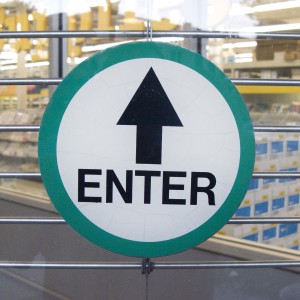
How should we arrive at the best match for mobile in retail? How are customers using their mobile phones, and are we gearing up to meet their expectations?
In the frenzy of the digital revolution, we’ve all probably heard about the concept of retail clienteling . The world is abuzz with meeting retail customers where they are, interacting with them on social, providing location based coupons and many other such capabilities. Product vendors and consultants are leading the charge as they try to be in front of this retail revolution.
Meanwhile, study after study shows that the consumers just want a convenient and contextual shopping experience.
- A study by Nurun (now Publicis) says that “retailers need to get smarter about how to use mobile to their advantage by rethinking the offline shopping experience to meet the needs of mobile-empowered shoppers”.
- Another study by McKinsey states that retailers “should stop and ask what consumers really want”.
If we follow the most common customer journey, the following needs come to the fore:
1. Providing product and fitment search online
It’s well known that customer journeys are increasingly starting online instead of in a store. However, assuming that because a customer is pinning your product on Pinterest or adding it to their shopping cart means they will make a trip to your store to try it on is a little premature. Yes, they may, but not before they are able to review other choices as well. Studies also show that a mobile app is adopted only when sticky and really useful capabilities are provided. In such cases, we might need:
- A well optimized mobile site that allows the customer to search and do this exact research.
- Information on inventory at nearby or preferred locations
- Applicable promotions.
This basic capability needs to be made robust.
In addition, consumers not only will research the product they searched for but also other options that will meet their need. I covered this in The Principal of External Reinforcement in my book, Dancing the Digital Tune: The 5 Principles of Competing in a Digital World. More likely than not, they are searching for your product as well as several other products from probably several different brands. It’s human nature, and it applies whether price, quality, design, the desire to be different, a promotion you sent them, or any other need triggered the motivation to research your product. Few people in the retail world is paying attention to this basic consumer need.
How well do your channels help the customers decide?
2. In store ability for customer to continue this analysis
As we browse a store, several questions are running through our minds. What else is available that is similar, is this the lowest price, how are the reviews, what did others buy, is this available in another color or configuration, among many other questions. Most stores fail to meet this demand for analysis through capabilities for customers to either do this themselves (Kiosks) or through associate assistance.
- What may be urgently needed is a capability for the store associates to help a customer in person, quickly. Previous purchases, social interaction, coupons available, and other data relevant to the customer may be made available to the associate.
- Self service kiosks and smart mirrors in the dressing room for example, promotions and inventory of other similar products when they scan the barcode. While the benefits case needs to be worked out for this one, stores are already experimenting with this.
- Capture unstructured feedback on the product line, inventory, pricing, store layout, lighting etc. Retailers as well as brands are not getting this today. Getting this information from a focus group or survey is way different from receiving feedback as these aspects are being experienced in real time.
The store associates and the store experience are a puzzle few are able to crack. As retailers reduce costs they also recognize this one asset that is a vital link to the customer – the only thing really that truly differentiates them from an online store. Can we provide a great experience in the store. How can we help customers make up their mind?
Summary
Instead of launching snazzy apps for customers that won’t be used (unless its a specialty or luxury store with a loyal clientele), what are most needed are capabilities to personalize the experience and map it closely to the customer journey:
- In store: ask about the products that were and were not bought on the last visit, and proactively help with pricing queries and applying promotional coupons, be the link to the brand, and capture unstructured feedback.
- Online – help with the need for external reinforcement, immediate information needs, and a drive to e-commerce or to the store.
Photo credit: Photo credit: ** RCB ** / Foter / CC BY
Reference for overall trends and statistics. Conclusions are my own.
